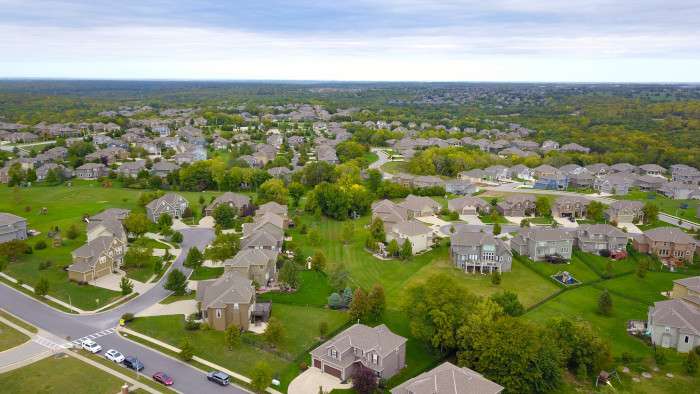A second mortgage (also known as a home equity loan) is a type of home loan used by homeowners to borrow against home equity. Second mortgages are commonly used to consolidate debt, fund home improvements, or make large purchases.
See below for home equity loan interest rates available as of April 17, 2024 . Interest rates are generally subject to market conditions and can change at any time without notice. If you find a good deal, we recommend submitting an application and rate lock (where applicable) as soon as possible.
NOTE: The second mortgage rates table displays below and may take a few seconds to load.
Another option: You may also want to consider a no payment home equity “loan”, which enables you to borrow against your home equity with no monthly payments and no interest charges even if your credit isn’t perfect.
Table of Contents
How Does A Second Mortgage Work?
A second mortgage (also known as a home equity loan) is a type of home loan used by homeowners to borrow against home equity. Second mortgages are commonly used to consolidate debt, fund home improvements, or make large purchases.
Second mortgages are structured as junior liens behind existing mortgages.
A second mortgage can be a great option if you already have a low interest rate on your primary mortgage. It enables you to borrow against your equity without refinancing your existing mortgage.
Second mortgage rates and terms vary depending on qualifications and market conditions, but they usually have fixed rates and set repayment terms. You borrow the full amount up front in one lump sum, then pay it back over a set loan term of 10 or 15 years.
The relatively short payoff term can sometimes be a disadvantage because it results in a higher payment than a longer term loan. However, the shorter loan term also means you’re paying off the loan faster, which saves you interest in the long run.
Because second mortgages are junior liens, they’re riskier from a lending standpoint. Average second mortgage rates tend to be higher than average cash out refinance mortgage rates.
Second mortgages are often cheaper and simpler to get than a cash out refinance. Closing costs are typically much cheaper and the application and approval process is simpler and faster.

What’s the Difference Between a Second Mortgage and a Home Equity Loan?
The terms home equity loan and second mortgage are often used interchangeably by mortgage professionals and homeowners.
Technically, a home equity loan doesn’t have to be a second mortgage. If there’s no existing loan against the home, then it’s not a second mortgage, it’s technically a first mortgage.
Most home equity loans are structured behind an existing mortgage, so the terms home equity loan and second mortgage have become synonymous.
If you hear somebody discussing 15 year second mortgage rates or 10 year second mortgage rates, they’re likely referring to a 15 year or 10 year home equity loan.
A second mortgage and home equity loan are essentially the same thing (most of the time).
What’s the Difference Between a Second Mortgage and a HELOC?
The terms second mortgage and home equity line of credit (HELOC) are used interchangeably by mortgage professionals and homeowners as well (nice and confusing, right?). Both are a type of mortgage used to borrow against home equity, but they function in different ways.
A home equity line of credit, or HELOC, is a revolving credit line that usually has a variable interest rate (but not always) and an interest-only payment. Instead of borrowing all the money in one lump sum up front, you borrow as needed over time. This flexibility makes HELOCs an attractive way to tap into home equity.
A second mortgage home equity loan works differently. You borrow all the money in one lump sum up front and pay it back over a set loan term. Unlike a HELOC, second mortgage rates are usually fixed.
HELOCs can technically be second mortgages if they’re placed behind an existing first mortgage. However, most of the time people refer to a HELOC as a home equity line, line of credit, or HELOC.
When somebody uses the term second mortgage, they’re usually referring to a fixed rate second mortgage or home equity loan.
Yes, this can be confusing! Hopefully this explanation cleared up some of the terminology so you can more easily determine which loan option makes the most sense for you.
Should I Get a Second Mortgage or a HELOC?
The answer to this question depends on how you plan to use the funds.
If you don’t need the proceeds right now, a HELOC may be better. You can borrow what you need when you actually need it.
Of course, don’t forget that HELOCs usually have variable interest rates. If interest rates increase, your payment could increase as well.
If you need the money now, a second mortgage may make more sense. For example, if you’re consolidating debt or making a large purchase, you’ll likely need all the money up front, so you may want to go with a home equity loan/second mortgage.
Don’t forget that second mortgage rates are usually fixed. If you like a predictable payment that won’t change with interest rates, then a second mortgage may be the better option.
How To Get The Best Rate on a Second Mortgage
Second mortgage rates are heavily based on credit scores. If you want the lowest second mortgage rates, you need to have strong credit scores.
Debt-to-income ratio sometimes matters as well, but credit scores are usually the most important qualifying factor.
Credit scores range from a low of 350 to a high of 850. According to Credit.com, the average credit score in the United States was 711 in 2021. There are five main factors that influence your credit scores:
- Payment history: 35%. It’s very important for your credit scores that you make your payments on time.
- Credit utilization: 30%. If you have high utilization (i.e., you’re “maxed out”) on credit cards, expect your scores to suffer even if you make your payments on time. Keep your utilization below 30% of the credit limit.
- Credit age: 15%. Length of credit history is important. Avoid closing old accounts unless absolutely necessary.
- Credit mix: 10%. Lenders like to see a mix of different types of credit accounts, such as revolving (credit card) accounts and installment loans like mortgages, car loans, etc.
- New credit: 10%. Be careful when applying for new credit cards or loans. Too many new accounts can damage your scores.
How Can I Improve My Credit Scores?
As we’ve covered, second mortgage loan rates depend heavily on credit scores. It’s important to have high credit scores so you can get the best loan deal.
The best way to improve your credit scores is to make your payments on time. As we’ve covered, payment history is the single largest component of the credit score calculation.
It’s also important to avoid overutilizing your revolving credit. High utilization can damage your credit scores even if you make your payments on time. Keep your credit card balances below 30% of the credit limit at all times.
Length of credit history also contributes to good credit scores, but it’s a smaller component of the credit score calculation. If want to close some accounts, we recommend closing your newer accounts first.
Be careful not to open too many new accounts at one time. If you’re shopping aggressively for new loans, it may hurt your credit scores.
Are rates higher on a second mortgage?
Yes, 2nd mortgage rates are usually higher than refinance mortgage rates. A second mortgage is structured as a junior lien behind an existing mortgage, so it’s riskier from a lending standpoint. If you’d like to check second mortgage rates today for a variety of lenders, you can find them at the top of this page.
Do you need 20% for a second mortgage?
Not necessarily. Second mortgage rates are dependent in part on how much equity you have in your home, but you don’t necessarily need to have a 20% equity position. If you’d like to check second mortgage rates today for a variety of lenders, you can find them at the top of this page.
